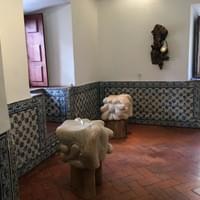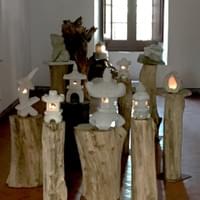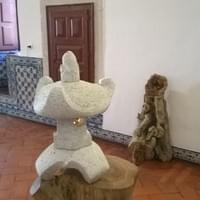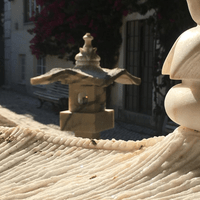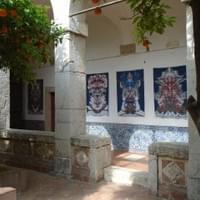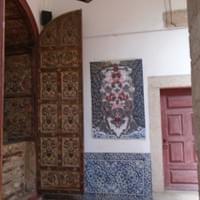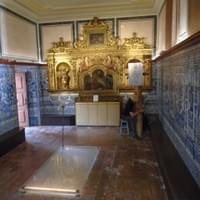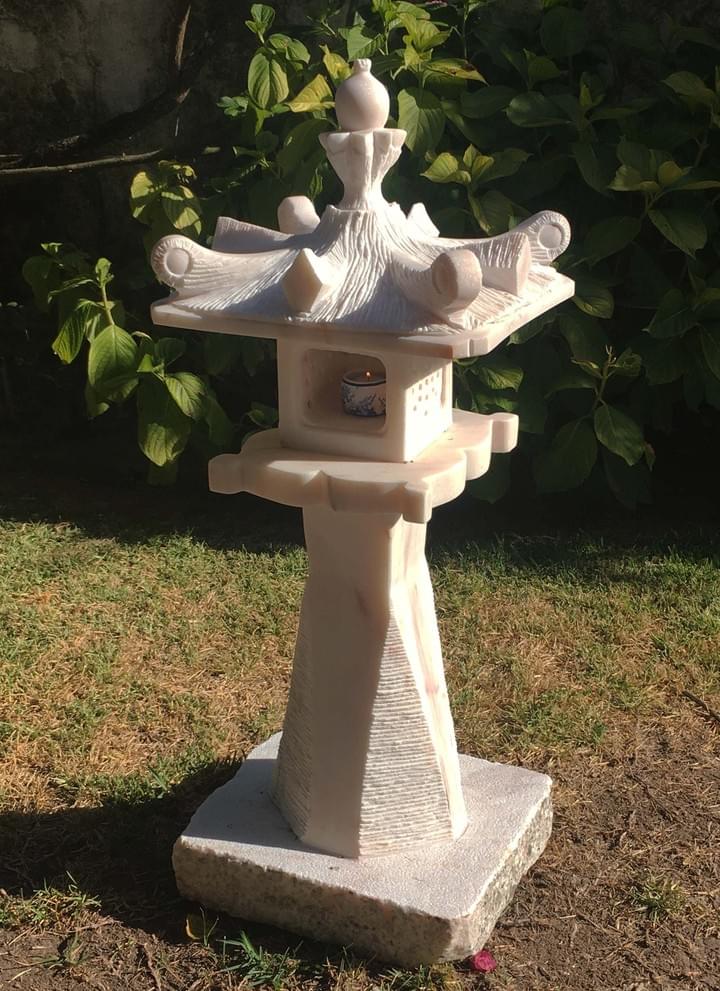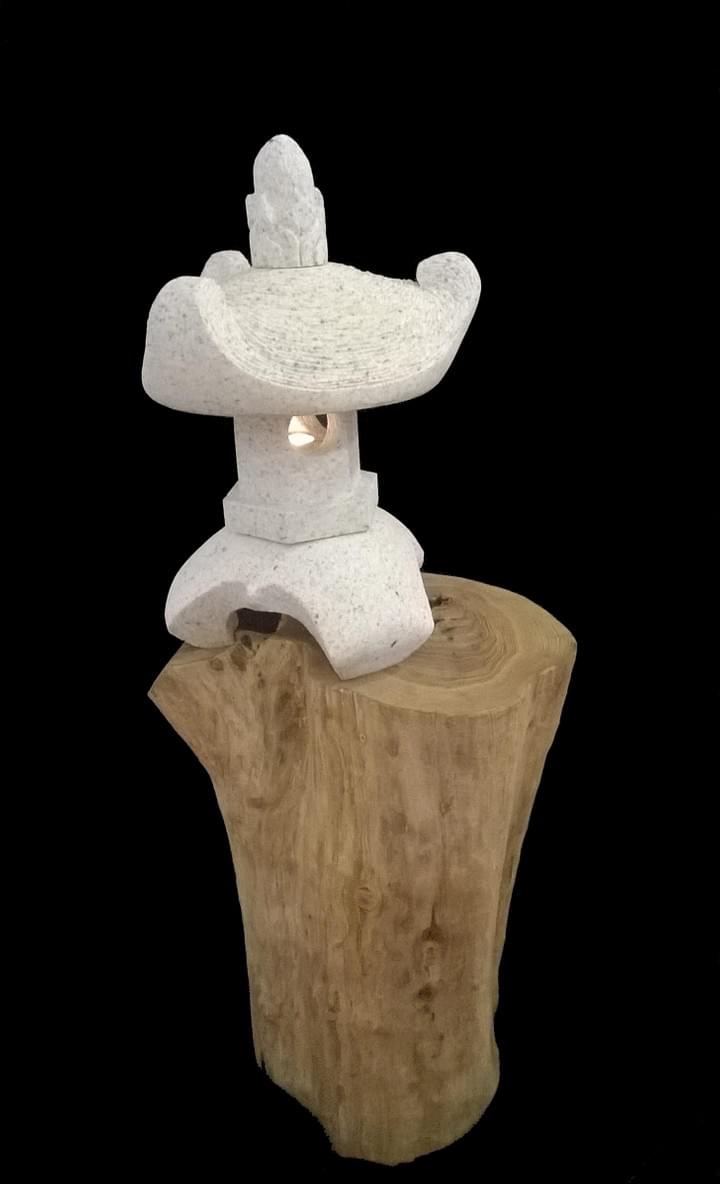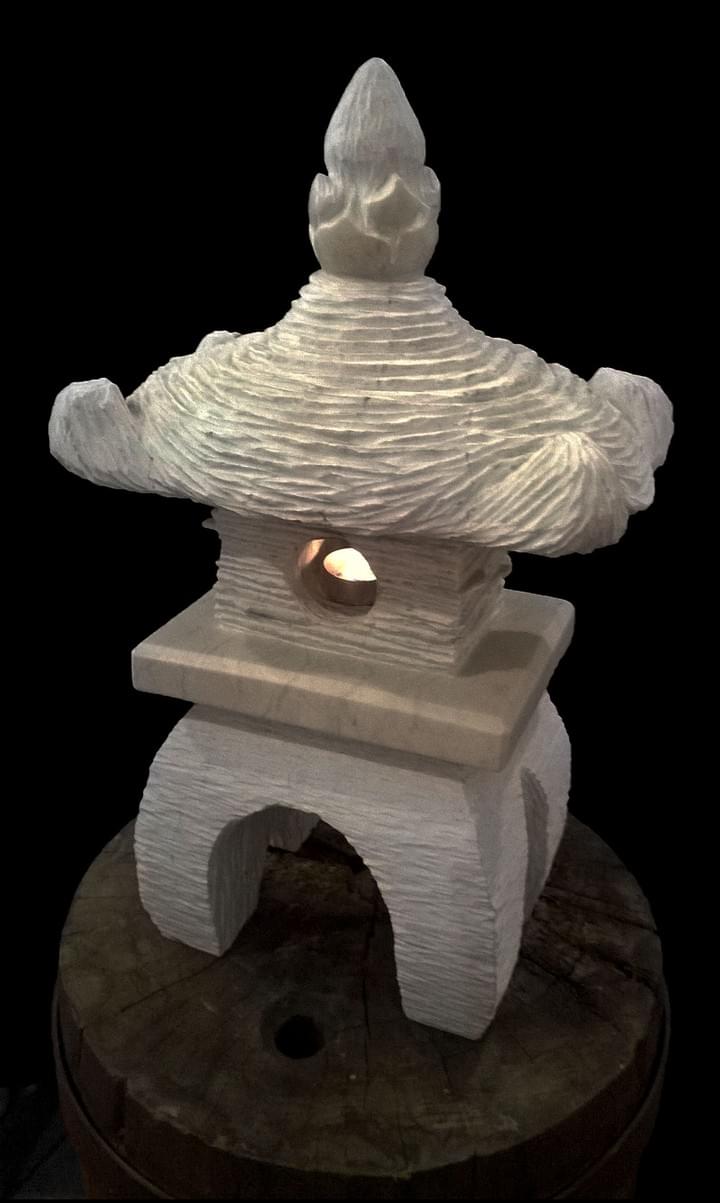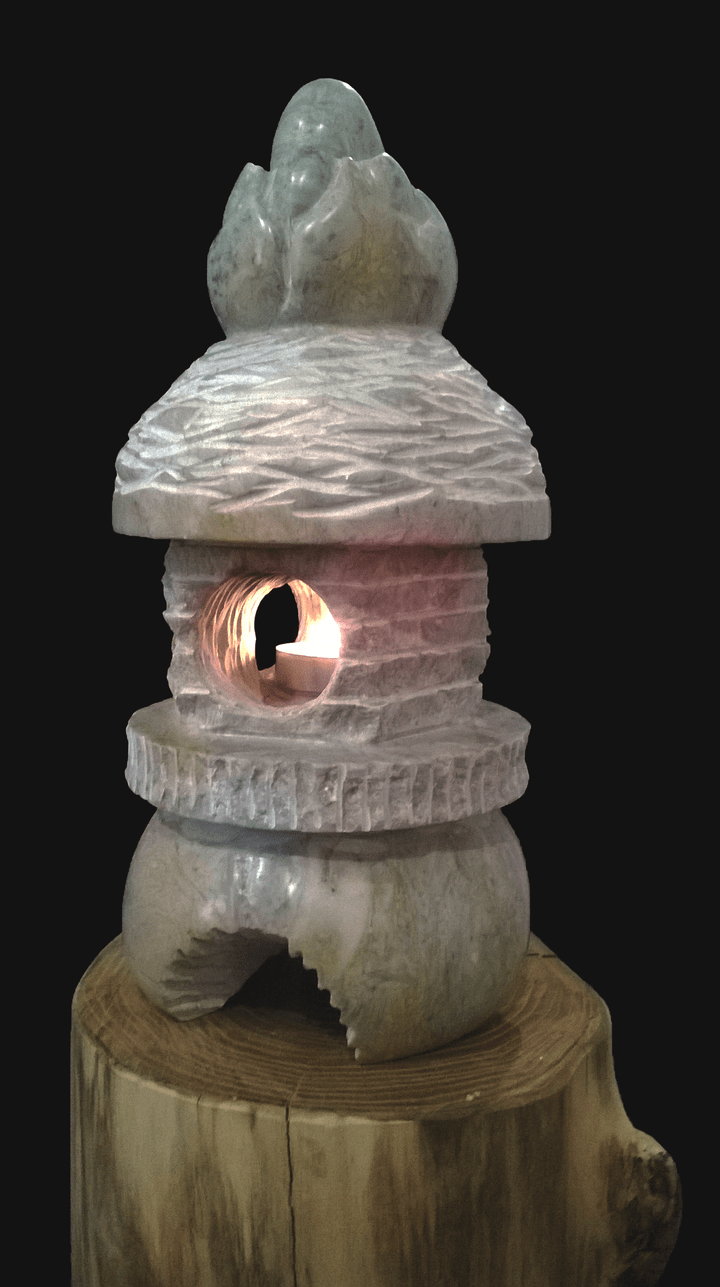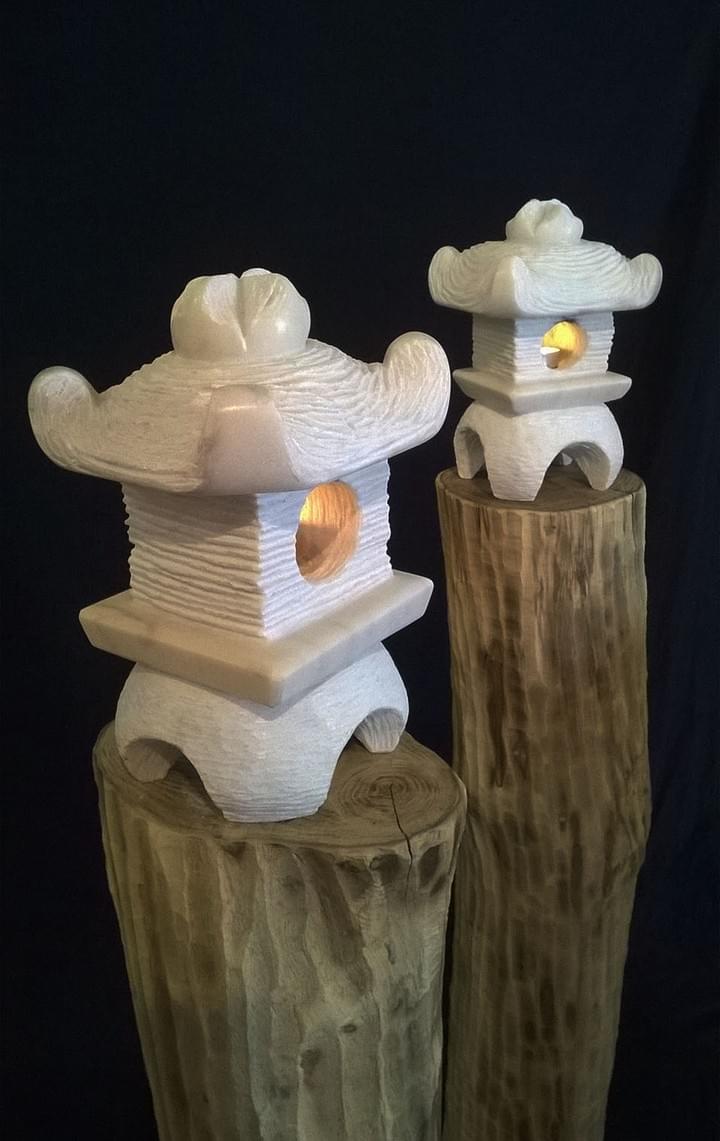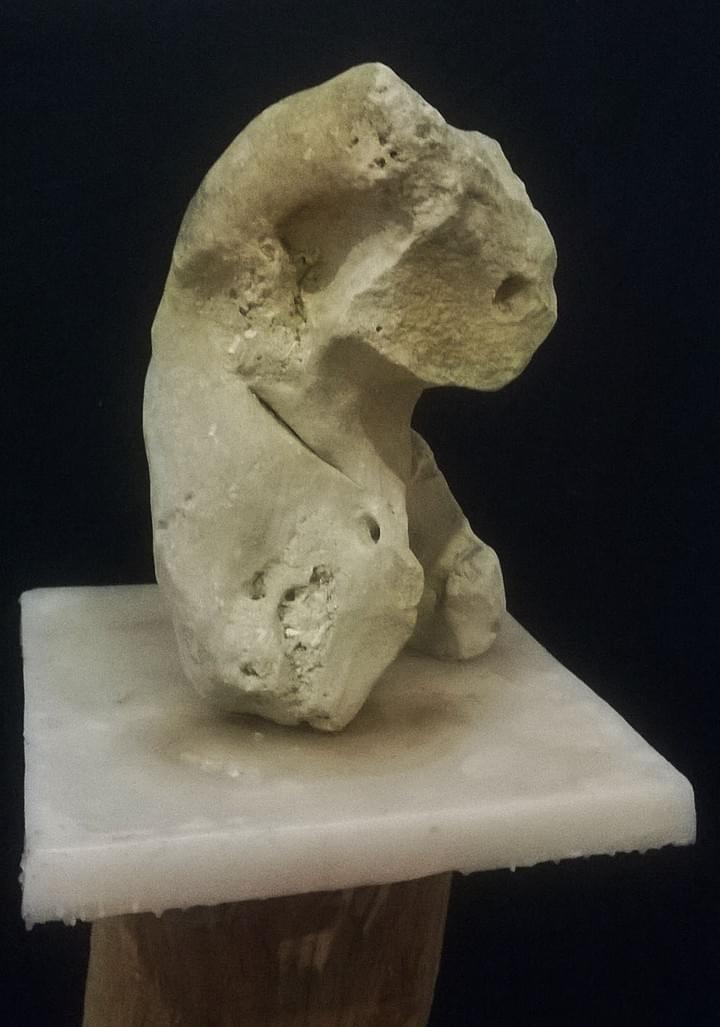


Exclusive ART LOFT in Lisbon - Private Art Gallery
- …
- 0


Exclusive ART LOFT in Lisbon - Private Art Gallery
- …
- 0

Carlos Henrich
TŌRŌ

SEEDS OF LIGHT
Sculpture and painting exhibition at Convento dos Cardaes in Lisbon, 2019.
Organised by Ana Maria Viegas - Galeria Ratton and Zambeze Almeida.
“…The final impression of the ensemble is like a sense of serene luminosity, as if all the pieces that make it were in fact "Seeds of Light", a light that could symbolize the human being condition, a condition never achieved but always sought, that we should not depart from the horizon of our global utopia, maintaining the sense of a route in which many results have been, nevertheless, achieved”
in presentation text by Júlio Moreira
SEEDS OF LIGHT solo show, inspired by
FUKIYA and FUYORI Villages (JP),
brings us the importance of “beauty” in it’s essence for the
sustainability of our souls upon distinct civilizations.
After being started in Japan, it was exhibited in
Convento dos Cardaes-Lisbon,
highlighting the importance of cultural resistance and the
gains of new ways of seeing and feeling
different culture's
aesthetics, in the same way
Japanese or African art
has strongly influenced impressionism or modernism.

Presentation exhibition text by JÚLIO MOREIRA
SEEDS OF LIGHT
Convento dos Cardaes
The title that Carlos Henrich has given to his exhibition at Convento dos Cardaes, becomes intelligible as you go through the different parts that compose it and one sees the execution of the final concert with his compositions, executed in the sculptural instruments that are part of the exhibition.
Instead of the usual genres distinction - exhibitions of painting or sculpture, with drawings that lift the veil of the respective creative paths - the exhibition of Carlos H is organized into distinct nuclei that complete themselves: painting and drawing (A). sculpture in stone (B), wood carving (C) and musical instruments (D)*
The works that Carlos Henrich presents in this exhibition were executed in his current place of work, plot of land with a rural house, which is part of a farm, actualy with cultural traditions, located in Apelação, Odivelas County.
The beginning of the work consisted in the choice of old trees slaughtered or in conditions of near slaughter in that part of the farm. The choice of trunks was made based on their shapes, dimensions and even their past as trees in development. Dominant winds, sun exposure, and irregularity of water availability determine the thickness and the actual tracing inside the trunk, the annual growth layers, visible in a cross-section, whose distribution and drawing condition the quality of the vibrations of the wood in the construction of the instruments, as if these vibrations were the expression of a past, revelations of their destiny as trees as living beings.
But trees do not grow in space. Its roots penetrate the rocks that were the mechanical supports of its resistance to the action of the winds.
Carlos Henrich goes to the rocky massifs for the material for his stone sculptures, looking for shapes compatible with the common origins of wood and stone.
The parcel of land where he has the shipyard is bounded by a affluent brook of the Trancão river and in the near of the fallen trees he collects the stones rolled along its course since immemorial time, to associate them in a ecological community sense that allows him to reinforce the aesthetics expression of the whole.
The old trunks, randomly drawn by the machines, or whose start has had the opportunity to guide, already contain unlimited suggestions of forms and meanings, which will seek to define and associate with each other, as if trying to reconstitute the luminous days of great cosmic euphoria that were in their origins, to communicate them to the human senses.Carlos Henrich
Carlos Henrich was born in Switzerland in 1965, from a traditional family of engineers of German origin, who the following year moved to Brazil, where he lived until the age of seventeen. Since early age he was more interested in all the arts than in the family planning for his career, and when it was time to decide on his destiny, he went to live in Karlsruhe to attend a university, he choosed the school of Fine Arts. During the course he came several times to Portugal where he established relationships with personalities such as the historian António Telmo who introduced him to the philosopher Agostinho da Silva, with whom he felt deep affinities, and the sculptors João Cutileiro and the Japanese Niizuma.
He also spent time in Japan in the mountains in the Okayama area. During his stay he absorbed deeply the Japanese culture, transferring his spirituality from the sacred, to a humanistic sensibility of an ethical and aesthetic nature, closer to the influence of Agostinho da Silva.
This influence is objectively manifested in the core parts (B) that represent the traditional Japanese forms of toroo, a kind of small temples within which a light that prefigures human existence, situated between the earth as original mud, and the infinite space. And it is as if each one of these figures manifests a nostalgia whithin the rock, inside of which had been discovered and taken away by the artist's hands.
Performance & Exhibition
On a recent date, Carlos H invited a small group of friends to the Roman Ruins of Lisbon, where he performed a concert, in partnership with the French artist Vincent Martial, specialized in synthetic sound structures, in which he presented his majestic sculptural instruments - resonance for manual or electronic percussion - on which his compositions were performed.
This exhibition/concert at the time created a space of interrogation, whose answers are in a certain way in the exhibition Seeds of Light.
The core of musical instruments (D) in part presented at the time, joins together two expressions, the main of which is as an extension of the core (C) of wood carvings, while the complementary expression is composed of pieces obviously intended for musical execution.
The sound structure of musical compositions consists of the vibrations of the carefully chosen and prepared wooden parts, whose vibrations establish, with their sonorities, the final unit of the exhibition.
The final impression of the ensemble is like a sense of serene luminosity, as if all the pieces that make it were in fact "Seeds of Light", a light that could symbolize the human being condition, a condition never achieved but always sought, that we should not depart from the horizon of our global utopia, maintaining the sense of a route in which many results have been, nevertheless, achieved.
Júlio Moreira, Lisbon, June 2019
- THE PORTUGUESE HOUSE TŌRŌ
SEEDS OF LIGHT

THE PORTUGUESE HOUSE TŌRŌ II
2019 | Olive tree root, calcite crystal |172 x 122 x 85 cm


THE PORTUGUESE HOUSE TŌRŌ
2017
Olive tree root, Lioz limestone, stalagmite
83 x 55 x 61 cm

ALPHA
2016
Onix marble, serpentine stone, japanese fabric | 14 x 13,5 x 22 cm



TEARS
2019
Lioz limestone, wattle tree
80 x 70 x 55 cm | 81 x 72 x 57 cm
NATURAL MANIFESTATION
2018
Wattle tree, cork oak | 110 x 46 x 40 cm


THE NEW SAMURAI
Fuyori 2015
Painting on Japanese indigo, Bengara colour
150 x 87 cm

Available TŌRŌ Sculptures -THE BAMBOO FOREST

Tōrō GATE
2019
Estremóz marble | 151 x 54 x 51 cm
(the pair has roughly the same measures)

Tōrō III
2018
Estremóz marble | 112 x 36 x 47 cm

Tōrō
2016
Grey granite 61 x 55 x 44 cm
Wattle tree 75 cm
(total height 136 cm)

Tōrō II
2016
Glazed limestone | 50 x 19 x 31 cm

Tōrō IV
2017
Frog’s eye Lioz limestone | 33 x 15 x 15 cm
Wattle tree 99 cm
(total height 132 cm)

TWINS Tōrō
2016
Estremóz marble, wattle tree
99 + 27 x 18 x 17 cm
96 + 27 x 15 x 15 cm

Tōrō V
2018
Lioz limestone, wattle tree
78 + 54 x 17 x 26
3.000€

Untitled
2019
Estremóz marble, Lioz limestone, wattle tree
99 + 27 x 18 x 17 cm

CAT
2019
Sandstone, wattle tree
120 + 36 x 30 x 25 cm
CARLOS HENRICH
SHORT BIO
Brazilian/German (1965 Baden-Switzerland).
1966-1982 São Paulo (BR).
1982-1985 Mechanical Process Engineering in Durlach, Germany.
1985-1990 Art Academy of Karlsruhe(DE),Painting Master Degree - Prof. Rainer Küchenmeister.
At the same time developed marble sculptural works in Vila Viçosa and Évora (PT).
Lives and works in Lisbon since 1990.
Represented by gAD - galeria Antiks Design, Lisbon (from 1993 until it's closing in 2012).
The project he created in 2010, ART OCCUPIES LISBON, PARIS,…and also HAMBURG (an ongoing project involving foreign and local artists interacting with a specific city and its inhabitants, co-curatory Lisbon: Rajele Jain, Paris: David Hardy – 59Rivoli - Paris) was invited to Japan in 2015.
- BIICHU ART BRIDGE - ART OCUPA PROJECT JAPAN, local curatory Raku Gaki and Kazuhiro Korenaga.
Residency sep-oct. 2015, and until april 2016 exhibition at Shoka Ikegamitei Museum - Takahashi (OKY- JP)
- AVAV -(36), live painting, curator Veruscka Gírio, Roppongi Basecamp, TOKYO, 2015.
Sculpture Awards (Sel.):
1st for “LIQUIDAÇÂO TOTAL”, Estoril Sol, 1990;
3rd for the “TETRAHEDRON”, EDP-Edinfor Awards CYBERSPACE, Casino Estoril 1996;
Best Media Award for the “RESONANCE 7.84” (with Kazike),Black Raven Awards,THE NEW ART FEST, MUNHAC, Lisbon, 2017.
Private and public collections in Angola, Brazil, France, Germany, Holland, Japan, New Zealand, Portugal, Spain and USA.
Public outdoors sculptures: Hofgarten-Ettlingen (DE); Cascais, Leiria, Sabugal, Évora, Oeiras and Amieira do Tejo (PT).
Ratthaus Kunst Museum Lippstadt (DE), EDP, Ermida de Belém, EFCIS, Estoril Sol Hotel, Tróia Design Hotel and Casino (PT), Musée Igor Balut-Paris (FR), Okayama Prefecture, Shoka Ikegamitei Museum-Takahashi (JP) are some of the public collections that hold indoor paintings, sculptures and instalations.
Filmography:
2003- Carlos HENRICH, by Olho de Sardinha - Fine Art Documentaries, Lisbon.
2006 - People of Europe - BIENVENUE CHEZ ZAMBEZE, ‘27min, 50th European Community anniversary, director Ciro Cappellari, ARTE TV France and German TV network.
2007 - Carlos HENRICH, by Cloves Mendes, Jucutuquara Filmes (BR).
For FULL BIO or CV visit: WWW.CARLOSHENRICH.COM
If you'd like to have more informations about TŌRŌ
or get your own personalised TŌRŌ
Please ask.
PRÍNCIPE REAL, Lisbon

